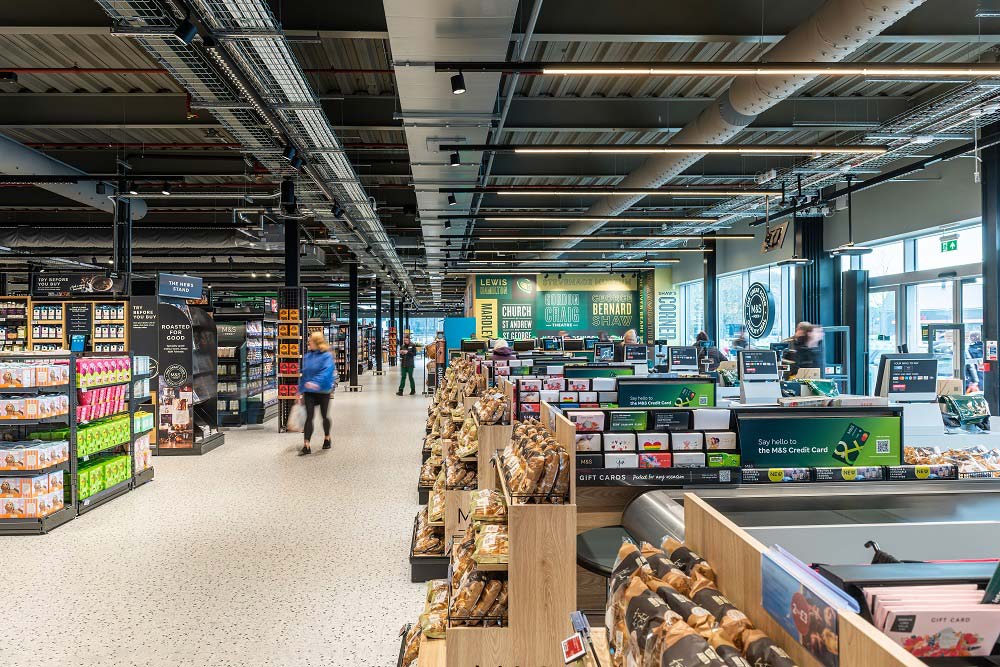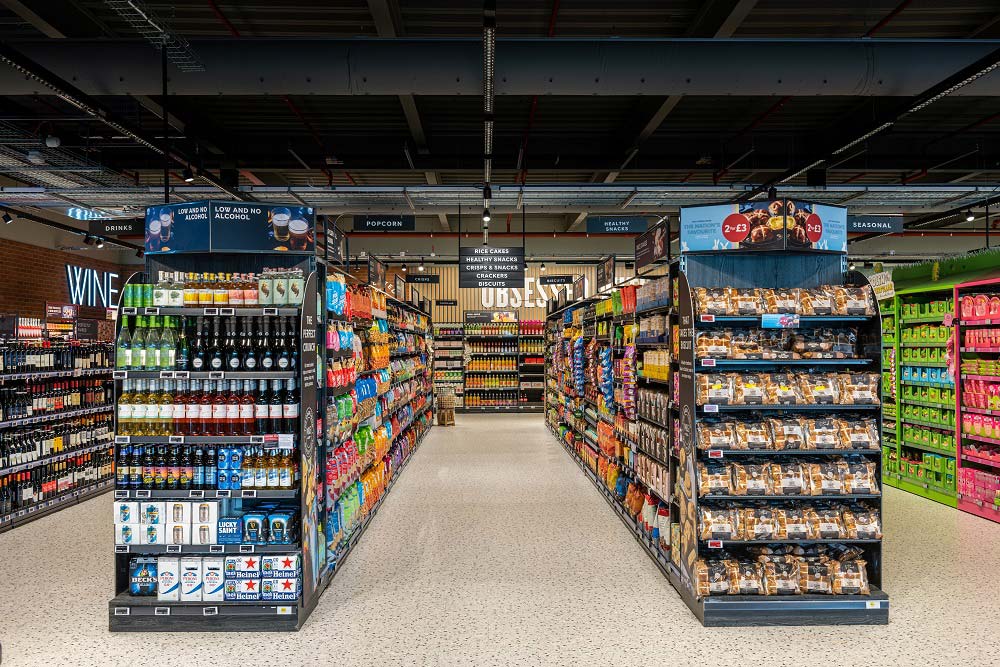TRILUX’s new lighting concept for Marks and Spencer food halls was designed to create a “bigger, better, fresher” shopping experience and bring the market feel to life. The black finish of the custom designed luminaire blends into the ceiling, allowing the focus to be on the produce.
Marks and Spencer, a leading British retailer, wanted to bring a fresh, new look to its Food Halls. With a requirement to make the spaces feel like a market and not a conventional supermarket, TRILUX was brought on board to design the lighting concept. The new 75,000 sq ft Stevenage store, which opened in April 2022, showcases the concept and is one of the first in the country to feature the new design.

Invisible light
Traditional supermarket lighting is bright, white, and uniform. Marks and Spencer’s original lighting scheme centred around this concept with a highly visible frosted plastic lens, which TRILUX replaced with a new lighting system based on its popular E-Line continuous line. The key difference here, is that the customised luminaire features a black profile with a recessed LED light source to create the illusion of no visible light until customers are directly under the fitting. The light is evenly distributed on products, not the floor, using a double asymmetric distribution.
The modularity of the E-Line system allows spotlights to be integrated wherever needed, with the flexibility to move later, with little to no cost.
The selected optics light the vertical faces of the shelving units uniformly, while wall washing techniques were used to highlight the signage and areas above the merchandise to make the space feel welcoming.
Guiding customers with pockets of interest
TRILUX’s black E-Line trunking system is arranged in single continuous lines to align with the store’s aisles and includes B.Veo spotlights and Grado wall washers, giving a less cluttered ceiling appearance.
Each area of the food hall was carefully thought out to create pockets of interest and guide the customer through the shopping experience.

Spotlights and wall washers – key lighting techniques
Spotlighting is used to highlight key features such as aisle signage, wine tables, cheese barges and coffee grinding, to name a few, while wall washing techniques are used around the perimeter of the aisles to define the atmosphere of each space. For example, in the Beer, Wines and Spirits section, the intention is to create a moodier atmosphere. Hence, the wall washers are positioned lower on the product, and only the illuminated signage lights the walls above the shelving.
In other areas, the wall washers are aimed above the shelving units and illuminate decorative wall features, providing a lighter and airier environment and increasing the perception of the height of the area.
Adding pendant lighting into the mix
The horticulture section has a large decorative corkboard wall lit using the same wall washing techniques, with the added interest of striking pendants to break up the space. In contrast, the large fresh produce counters have rafts of large, suspended opal diffuser panels in arrangements of banks of 4, 6 or 8 panels.
Highlighting the till ends
Finally, where the experience becomes transactional, the tills are lit using a frosted lens, separating the space with linear lines over the cash registers, including a spotlight on the ends to illuminate the point-of-sale units.
TRILUX’s lighting design has helped transform Marks and Spencer food halls into an inviting, market-style shopping experience. The TRILUX scheme has been installed at 10 – 15 sites so far, the plan is to roll out the concept in all new stores.
To find out more about TRILUX’s retail offering please visit: www.trilux.com/retail





